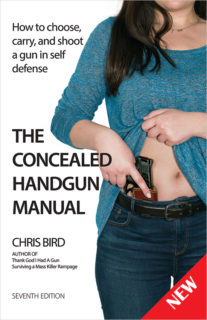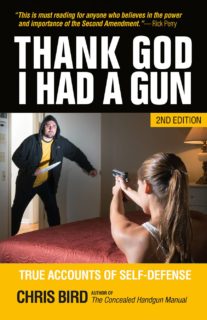Lessons Learned at the 2019 TCHA Annual Meeting
Lessons learned from watching 18,000 gunfights. That was the eye-catching title of John Correia’s presentation at the Texas Concealed Handgun Association Annual Meeting in Kerrville during the last weekend of March.
No, he hasn’t been present at 18,000 gunfights but has watched them on social media – mostly on You Tube. He showed more than 20 of them to illustrate the lessons he has learned.
With more and more video cameras tracking our every move when in public, more and more gunfights are being recorded. It is said that in Britain the average city dweller is caught on video 30 times a day. Although I abhor the surveillance society, we can learn from the gunfights recorded whether caught on camera in a store or on a public street.
Correia started watching gunfights on video several years ago in order to improve his training classes with information based on evidence. He founded his company, Active Self Protection, in 2011 and posts new videos daily on Facebook and You Tube.
Here are some of his conclusions.
- His first lesson is Carry Your Gun. “I have never seen law enforcement show up fast enough to help who weren’t already on the scene,” he said.
- He also quoted Clint Smith, owner of Thunder Ranch shooting school, saying, “Armed people kill unarmed people with monotonous regularity.”
- Correia emphasized the importance of situational awareness in avoiding confrontations and responding to them effectively.
- “So often I see people ignore pre-attack cues and lose initiative and options,” he said.
- Once a gunfight becomes inevitable, he warned that about a third of cases he has seen involve more than one attacker. Training for a fast draw and accurate first shot are essential to winning because gunfights are won or lost in tenths of a second, he said.
- “He who puts the first shot into the meaty bits of the other guy wins,” he added.
Watching the videos that Correia put up on the screen, the thing that impressed me the most is the speed with which these gunfights start.
Gunfights involving law enforcement officers are different from those involving armed citizens. In law enforcement gunfights, the officer initiates the confrontation and the gunfight starts when the law-breaker draws a weapon. It ends with the criminal dead or in custody. However, in a citizen involved shooting, the perpetrator initiates the contact. The gunfight starts when the armed citizen produces a weapon and ends when the citizen breaks contact or someone is incapacitated, Correia explained.
We have all heard the old saying that the average gunfight involves three shots fired in three seconds at three yards. Correia disputes that and said that according to his research, most concealed carry gunfights take place between three and seven yards and involve an average of 12 shots fired in five seconds.
Although concealment is not cover in most cases it works in the same way, he said. People are very reluctant to shoot what they can’t see.
Chasing deadly threats is a bad idea. Correia has seen many cases of people putting themselves back in danger by chasing the threat. “Learn to shoot and scoot,” he added.
From what he has seen, reloading a gun during a shooting almost never happens. He said it is more important to carry a trauma kit than a spare magazine. He has never seen an armed citizen use a backup gun in a gunfight.
He ended by saying the one thing he has learned repeatedly is that a huge number of people are “woefully, terribly misinformed and uninformed about the legal and moral aspects of using deadly force.
Correia’s website is www.activeselfprotection.com



